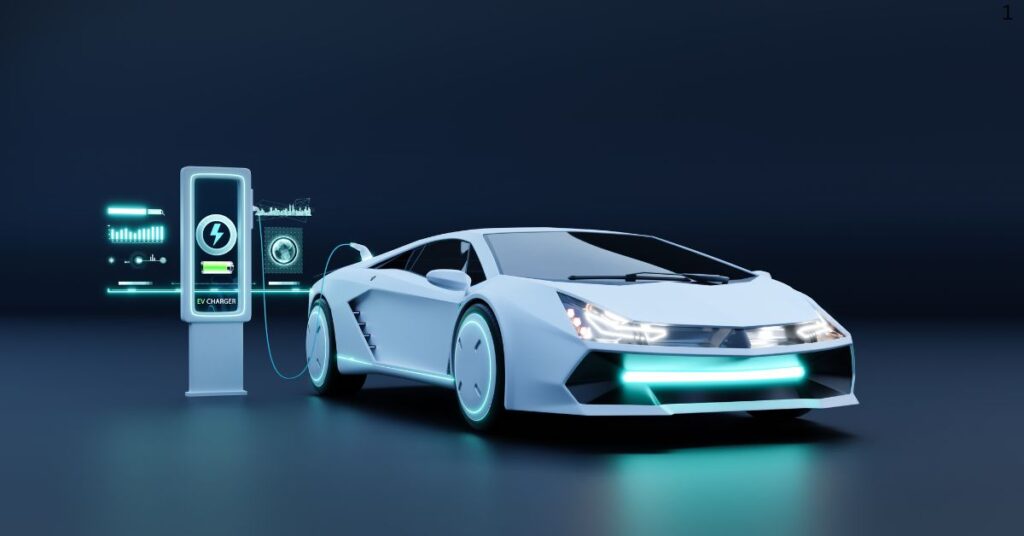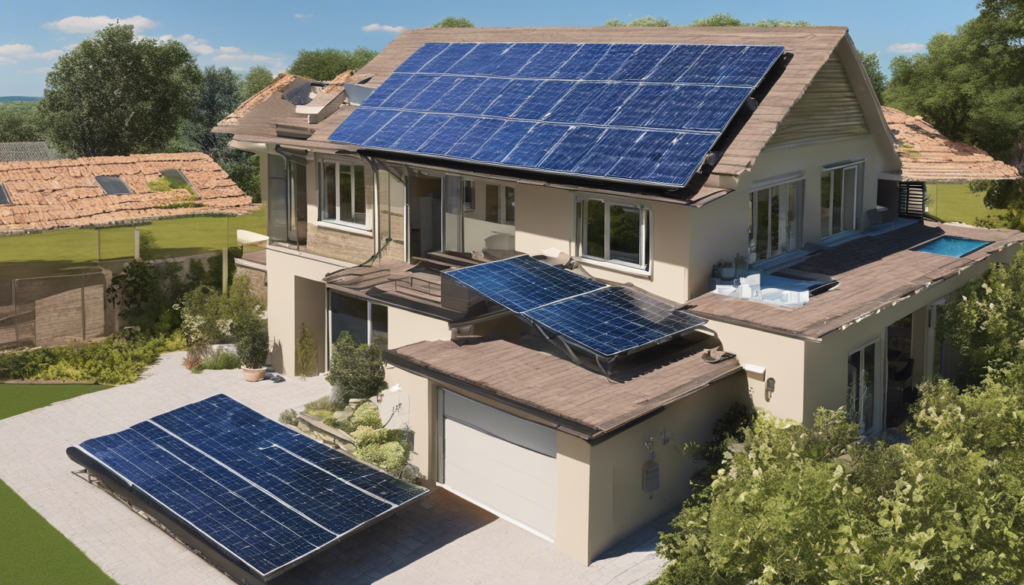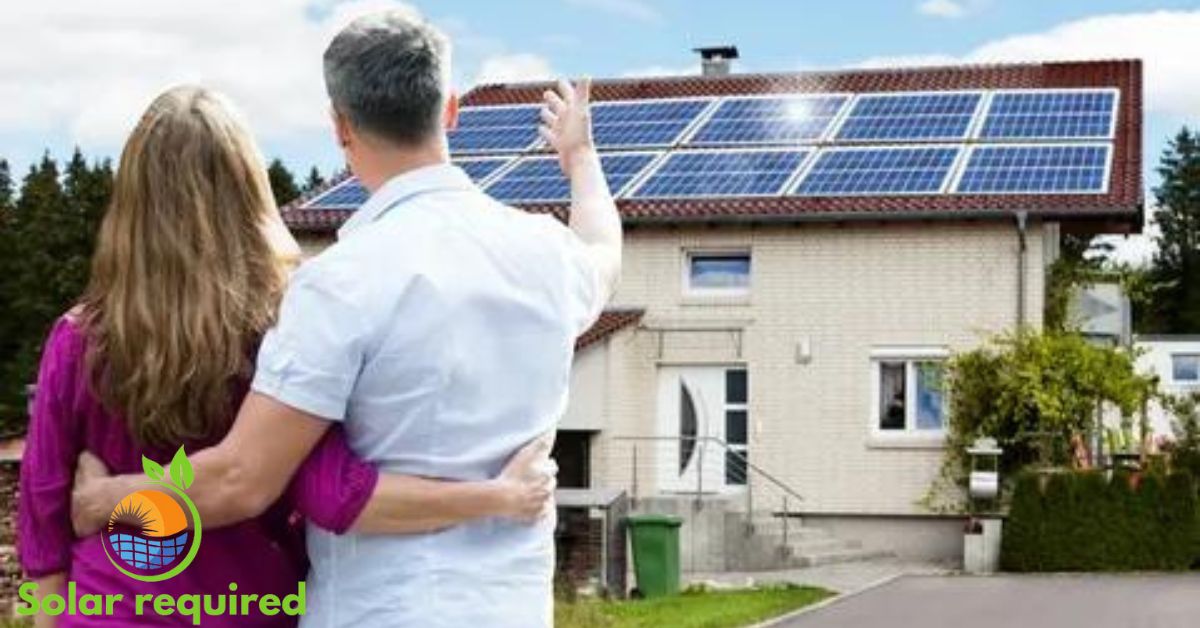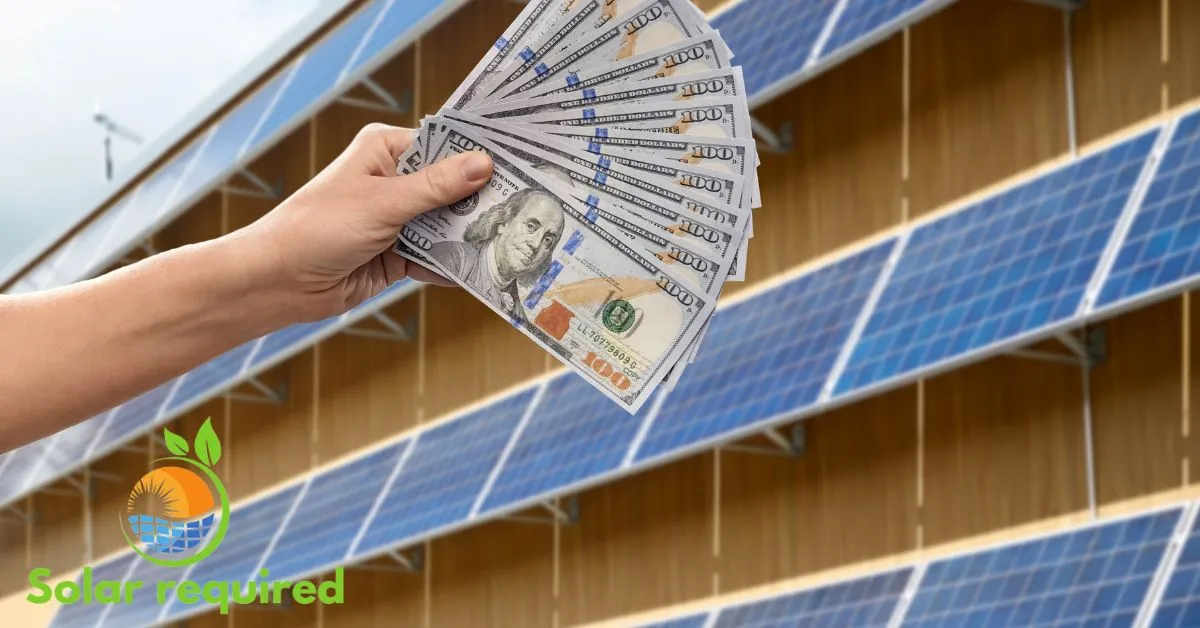Overview
Adding solar panels to an existing system is a popular topic in sustainability discussions. It uses renewable energy well. It boosts the efficiency of homes and businesses. This increase is a calculated financial investment and an act of environmental consciousness. Property owners are considering raising their solar power through DIY projects.
Or, they could do it by adding more solar panels to their systems. This is possible due to rapid tech advances and the growing access to solar power. There are many advantages to improving an existing solar setup. The benefits are big. The goal may be to cut carbon footprints, lower electricity costs, or prepare for a sustainable future.
We are unraveling the details of adding solar panels to an existing system. Several key things to consider come into play. Determining energy needs is the first step. It ensures the expansion matches actual and future use. Next, checking system compatibility is critical. Only some solar panels will work with existing configurations. Installing and obtaining permits involves navigating technical specifications.
You also have to follow rules that vary a lot by location. In examining the finances, a comprehensive cost analysis will help. It will be alongside exploring funding options. These steps will show the path to making the addition a good investment. We will examine each of these segments in-depth to provide a full understanding. This will guide those considering this sustainable leap.
Determining the energy of solar panels
To find the right number of solar panels for your system you have, you must assess how much energy you need now and in the future. Here are the key considerations:
Calculating Current Energy Use
Consider your yearly usage to determine how much electricity your solar panels need. Your electric bill should show how much energy you use. It covers the past 12 months. Track your energy bills for at least a year to find your total electricity use in kWh. Obtain the average monthly amount by dividing the total usage over 12 months 12. You can obtain the average daily usage in kWh for your home or office by dividing the figure by thirty.
Divide your annual energy consumption by the production ratio in your area to determine the number of solar panels you require. Then, divide that by the wattage of the solar panels you are considering buying. Or, use an estimate of 320 watts. For instance, if your house uses 12,800 kWh of energy and your area has a production ratio of 1.6, you would need 25 panels. This is assuming the panels are 320 watts.
Future Energy Consumption Projections
A home’s power usage isn’t just about its size. The number of residents and their energy habits matter a lot. For instance, a 1,000 sq ft home with four residents and average usage might consume 690 kWh monthly or 8,280 kWh per year. With a wattage of 320 and a production ratio of 1.4, the number of solar panels needed would be 8,280 / 1.4 / 320 = 18.48 or 19 solar panels (rounding up).
Electric Vehicles and Electrified Appliances

The average monthly energy consumption of households in the US is about 886 kWh. Based on these numbers, you will need 886/54 = 16.4 panels to offset your monthly power consumption fully. However, your energy needs will increase if you plan to charge an electric vehicle (EV) or add more electrified appliances. The short answer is that charging an EV usually takes 7 to 12 solar panels. The number depends on the make and model, the weather, and driving habits.
The Federal Highway Administration says the average American travels nearly 13,500 miles yearly. At that level of driving, most EVs will require around 4,000 to 5,000 kWh of electricity per year to operate. Combining solar energy with EVs creates many benefits. They include avoiding grid electricity costs. You also cut your carbon footprint. And you can use the EV battery to power your home during outages.
Checking System Compatibility
Solar inverters have one core job. They convert the direct current (DC) solar panels into an alternating current (AC) used in your home. There are two main types of home solar inverters:

Solar Inverter Capacity
The inverter’s efficiency determines the effectiveness of a solar panel system. We use Alternating Current (AC) in our homes and companies. Solar panels produce Direct Current (DC). Inverters accomplish this task. The inverter in a solar system operates best within a limited range, called its “window of operation.” The inverter’s ability to convert DC to AC varies with the power from the solar panels.
People say that the inverter is performing well. It’s at its best if the input from the panels is within the viewing area. I’ll use an example graph. An efficiency below about 83% is ‘sub-optimal’. Optimize system size to reduce inverter operation in this range.
Using too small an inverter will limit your system’s max power output (in kilowatts—kW). The size of your inverter will set it. Solar inverters are often undersized, which is better than oversizing them.
The size of your solar array is the most important factor. It determines the right size for your solar inverter. As a rule, your inverter should be the same size as your solar panel system. For a 6 kilowatt (kW) system, the proposed inverter will be about 6000 W, with a small margin.
Microinverters vs. String Solar Panels Inverters
Microinverters attach to the back of each panel and are best for complex solar installations. String inverters connect strings of panels in one central location and are best for simple installations. There are pros and cons to each type of solar inverter, and the right one for you ultimately depends on your system design.
A string inverter is usually installed next to your electric meter or main service panel in your house. An inverter gets electricity from solar panels. It converts it to AC and then sends it to your appliances. All the solar panels are connected. If one has a problem, it will affect the energy production of the whole group.
When using a microinverter, the DC to AC conversion is finished directly at the rear of the panel. Microinverters operate in a parallel circuit. Unlike traditional string inverters, they are not affected by the lowest-producing panel in a string. String inverters cap each panel’s electricity, while a microinverter uses all the power from each panel. This makes them good for complex solar installations on many roof faces.
String inverters are the most commonly installed type of inverter worldwide and are great if your roof is heavily shaded. They cost more than string inverters, but they are necessary for complex roofs. If your roof has shade during the day, power optimizers give panel-level optimization. This often makes them more efficient than a string inverter alone.
Upgrading existing or damaged components
Yes, you can upgrade the existing solar system. But the upgrades must meet the standards in your state’s policies and the policies of your network provider. The additions must work seamlessly with the existing panels, inverters, or battery storage.
An upgrade can be either a repair or an alteration. You only fix the worn-out parts of the system. An alteration changes the system’s strategy. It may include replacing or adding panels, inverters, or batteries.
Upgrading an existing solar system’s inverter can increase its conversion rate. The inverter is the brain of the solar system, so adding more solar panels necessitates upgrading it. Most inverters can handle more electricity than their rating suggests, but experts advise using inverters that match your solar panels’ output.
You might consider upgrading to one of three types of inverters. Hybrid inverters combine a solar panel inverter and a battery inverter into one unit. String solar inverters are strings of solar panels connected in a series circuit. Finally, there are microinverters. Microinverters attach to individual solar panels and function independently. The right choice depends on factors like your roof design and future expansion plans.
Installation and Permitting
Assessing the roof space and its structure
Before installing solar panels, you must check the roof’s structure to ensure it can support the extra weight. In most cases (around 95%), existing roofs can adequately handle the load of a roof-mounted solar system. However, a third party should evaluate the building and the proposed solar system design to confirm the roof’s capacity.
The engineer will suggest making the needed adjustments. These include fixing or replacing the roof. They also include adding more support to the beams or rafters if the roof can’t hold the extra weight. After we make and check these changes to match the project goals, we will recheck the new structure for safety and approval.
The evaluation will account for the usual snowfall, focus on places that get a lot of snow, and check that the roof and solar panels can hold the extra weight. Most solar panels can withstand two to four feet of snow accumulation because they have a pressure rating of 5,000 Pascals (Pa) or more.
The choice of roofing material and its condition also play a crucial role in the success and longevity of a solar panel installation. Different roofing materials require specific installation methods and compatibility with solar panel mounts. A professional assessment should check if the roof material can hold the solar panels. It must do so without harming its strength.
Related post: Solar Canopy Explanation
Permit Requirements
Before you start a solar panel installation, you must get the needed permits from the local Authority Having Jurisdiction (AHJ). You then submit project plans, which include site plans, structural designs, and electrical layouts, for review and approval. Solar installers must be familiar with local building and electrical codes to ensure their projects comply with regulations.
To speed up the permitting process, gather all needed documents beforehand. Follow the AHJ’s guidelines. This documentation may include:
- Site Plan: Depicting the solar panel layout and equipment location
- Structural Design: Describing the structural components and load-bearing capacity
- Electrical Layout: Containing the electrical system schematics, circuits, and interconnections
The AHJ will review the project plans for code compliance. They may ask for revisions or more information to ensure compliance.
Consider the AHJ guidelines.
During the inspection, solar installers should have all needed permits and inspections. They should keep documentation up-to-date and in order. They should also learn local building and electrical codes and any AHJ requirements.
Guidelines of AHJ
- The roof’s structural strength to support the added weight of the solar panels
- The mounting system’s ability to withstand wind loads specific to the installation area
- In regions prone to snow, the mounting system’s capacity to support the additional weight of accumulated snowfall
Use the max rail spans in the solar plans from the start. They are needed for the structure and to meet local codes and AHJ rules.
Cost Analysis and Funding Options

Breakdown of Extra Costs
Other expenses are associated with constructing a solar panel system and the panels themselves. A typical home system can cost as much as $13,800. Other expenses to consider include wiring, racking systems, and inverters, which comprise around 46% of the entire system cost. Another large amount, roughly 46% or $13,800, comprises installer costs, including labor, sales, marketing, and overhead. In most cases, permits, fees, and connectivity charges can add thousands to the final price.
The installation’s complexity affects the final cost as well. The tree removal or pruning cost could increase by $300 to $1,500 if the roof has several planes, dormers, skylights, or shade from trees. These features may necessitate the use of more workforce and equipment. Also, an electrical panel upgrade or rewiring may be necessary. This could add a few thousand dollars to the bill if the existing panel needs to be increased. It typically needs at least 200 amps for a solar installation.
Availability of Financial Incentives
Many incentives are available to offset solar panel costs. Eligibility depends on location, and the programs’ utilities, cities, and states offer. The federal solar investment tax credit (ITC) is a nationwide incentive that provides a tax credit equal to 30% of the total system costs. For example, if a homeowner installs a 10 kW system costing $33,000, their tax credit would be $9,900.
Many states and localities offer extra incentives, including cash rebates, net metering programs, which credit homeowners for extra electricity sent to the grid, performance-based incentives (PBIs), and solar renewable energy credits (SRECs). In Texas, for instance, there is no statewide solar rebate program. However, homeowners can use a property tax exemption for the added value of their solar system. They can also get incentives from local utility companies.
Estimating Payback Period
The solar panel payback period represents the time for the energy savings to offset the initial installation cost. Most US homeowners can expect a payback period of 9 to 12 years. However, this can vary greatly. It depends on factors like electricity rates, available incentives, and system costs. Some states, like Hawaii and Massachusetts, may have payback periods as short as 5 years, while others, like Louisiana and North Dakota, can stretch to 16 years or more.
To find the payback period, homeowners need to find their combined costs. They do this by subtracting incentives and rebates from the total system price. Then, they find their yearly savings from not paying for electricity and any ongoing incentives. Finally, they divide the combined costs by the annual savings. For example, if a homeowner has a $22,670 system cost after incentives and saves $2,800 a year on electricity, their payback period would be about 8.1 years. (That’s $22,670 divided by $2,800.)
The main factors affecting the payback period include average electricity usage and the number of solar panels needed. Also, the total system cost includes available incentives and rebates, expected solar energy production, and the increased electricity costs. After the payback period, the solar panels make free electricity. This leads to big, long-term savings. For most homeowners, these savings range from $28,000 to $120,000 over 25 years.
Conclusion
We’ve explored adding solar panels to an existing system. We’ve navigated the complexities from assessing energy needs to learning about system compatibility. We’ve also delved into the details of installation, permitting, and the financial impacts. The journey shows the technical and economic factors. It also highlights the empowering opportunity. Property owners can increase their commitment to sustainability and energy independence. By weighing these factors carefully, one can make an informed decision. It will improve the efficiency of their property, help the environment, and save money over time.
FAQs
Q: How complex is installing additional solar panels to an existing setup?
Installing additional solar panels to an existing system involves more than just setting up extra panels. It requires getting new permits. You also need to set up interconnection agreements. Plus, it would help if you got more racks and suitable inverters. Lastly, you need to hire at least two installers. This process incurs significant costs.
Q: Is it possible to combine older solar panels with newer ones?
You can mix old and new solar panels, but it’s generally not advised unless their voltage, wattage, and amperage are compatible. The brand of the panels is less important than their electrical parameters.
Q: What are the consequences of adding more solar panels than the inverter’s capacity? Exceeding your solar inverter’s capacity by adding more panels can lead to overloading. This means the inverter is operating beyond its intended capacity, which can be a deliberate choice by some system developers.
Q: What is the maximum amount of solar amperage that can be added to a 200-amp service panel?
Deal with 200-amp service panels by adding up to 40 amps. This is allowed by a rule that will enable 20% more capacity than the panel’s rated amperage.


